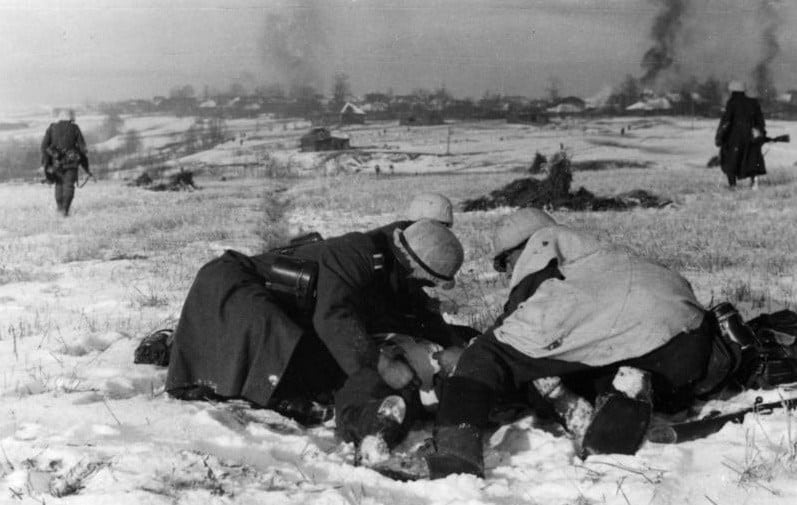@marcano ano lezem jim do prdele ale není to teď nacistické Německo teď to je Německo které nic nedělá.... asi žiješ v roce 1941
30.9. 1941 Operation Typhoon
Categories: Second World War , Calendar

In October 1941, the second major German eastern offensive, dubbed Operation Typhoon, got underway. No second offensive was envisaged at the beginning.
It was thought that Operation Barbarossa would destroy the Soviet state by September. As frightening as the initial German advance was, it was far slower than the Germans had anticipated. Fears of delay were first felt by Army Group North, which did not reach Leningrad. Army Group South advanced through the Ukraine more slowly than planned.
"In September, Hitler decided to send part of Army Group Centre to help, with the understanding that once the Ukraine had been defeated, Operation Typhoon, the final thrust on Moscow by a regrouped and reinforced Army Group Center, with nearly two million troops in Belarus," writes Timothy Snyder in Black Earth.
Unlike Operation Barbarossa, which began in the doubly occupied territories and advanced into pre-war USSR territory, Operation Typhoon was to begin and end in pre-war USSR territory. For the Jews, however, it had essentially the same consequences. As soon as German troops advanced on September 30, 1941, Soviet Belarus became a killing zone, much like the Baltics and Ukraine.
"On October 2 and 3, Mogilev became the first Belarusian town where all Jews perished. German troops were by that time advancing eastward in large numbers, but the German executioners nevertheless described their actions as defensive. The shooting of Jewish children in Mogilev - as one (Austrian) German explained to his wife - was to prevent something worse," Snyder adds.
The massacre in Mogilev was described by the German in question as follows. By the tenth attempt I was aiming calmly and confidently at a number of women, children and infants. I reminded myself in my mind that I had two children at home who would be treated equally, if not ten times worse, by these hordes. The death we provided was beautifully quick compared to the hellish torments of thousands upon thousands of GPU prisons. The babies flew in arcs through the air and we shot them to pieces in flight before their bodies hit the pit and the water."
But Operation Typhoon ultimately ended in a major setback for the Germans. Indeed, the extreme cold of December 1941 posed a critical problem for soldiers and vehicles. "On November 15, the German Army re-deployed its weakened forces for a final advance on Moscow. Its forces reached the gates of the city by a sortie that went unnoticed. On December 5, 1941, the Russian winter showed its strength and temperatures dropped below minus 30 degrees Celsius. The encroachment of the cold exhausted soldiers located far behind the supply line without winter clothing and equipment. The Russians were aware of this and on 7. Anderson Thomas describes the events at the time in his book, A History of the German Panzer Army: 1939-42.
Sources.
The article is included in categories:





 Díky za článek
Díky za článek 